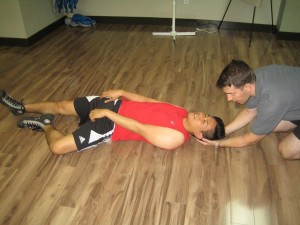Convulsions in children can be terrifying for parents, especially if there is no history of convulsion. A convulsion is also called a seizure or “fit.” A convulsion is a period of involuntary muscular contraction.Frightening as it may seem, it does not usually cause life-threatening situations or long-term consequences. They are not generally fatal. Febrile convulsions occur in an estimated 4% of all children between six months and five years of age, generally at ages younger than three. More than half of these children will only experience one convulsion in their lifetime. It is more common in young boys than girls and can run in families,
Convulsions in children, similar to those of adults, are caused by a sudden, abnormal electrical activity in the brain. The temporary disturbance of normal brain function causes a burst of abnormal electrical activity in one part of the brain and can spread to the other parts of the brain. When it reaches the cerebral cortex, more brain tissue activates and seizes resulting to abnormal activity. Repeated seizures are characteristic of epilepsy.
The contents of this article should not be used as substitute for medical advice. Enrol in first aid training and CPR courses to learn more about convulsions in children and other emergencies that children may have.
Causes of Convulsions in Children
It may be difficult to diagnose the exact cause of the seizure as it generally lasts from 30 seconds to a few minutes. However, some of the common causes are the following:
- Epilepsy
- Recurring convulsions
- Febrile convulsions
- Convulsion is due to high-grade fever/ infection
- Especially common in children between nine months and five years of age, affecting mostly toddlers
- Caused by flu or other infections in the body
- Hypoglycemia
- Low sugar levels in the body
- Hypoxia
- Reduced oxygen content in a particular region of the body
- Hypotension
- Low blood pressure
- Electrolyte imbalance
- Other uncommon causes in children:
- Cerebral tumor
- Drug overdose
- Cardiac arrhythmias
- Idiopathic or cryptogenic: of no identified cause
Symptoms of Convulsions in Children
Although it may be quiet obvious when a child is having a convulsion, some of the characteristics of seizures include:
- Sudden tightening of muscles on both sides of the body
- Muscle twitching and jerking
- Urinary incontinence
- Tongue biting
- High-grade fever
- Breathing difficulty
- Foaming of the mouth
- Child may be moaning or crying
- Unresponsive
- Unconsciousness
- Post-seizure:
- Lethargy
- Confusion
- Profound sleep
First Aid Management for Convulsions in Children
When a child starts convulsing, the main goal of first aid is to protect the child from any injury.

- If the child is standing, lay the child on a safe area. Make sure that the area is clear of sharp objects and other furniture that he/ she may hit.
- Place a cushion or a jacket on the child head.
- Loosen any tight clothing, especially those surrounding the neck.
- Do not put anything in the child’s mouth as it may cause damage to the tongue and gums.
- If the child begins to vomit, assist the child to his/ her side and clear the mouth.
Do not attempt to restrict movement as it may just lead to more harm to a convulsing child.
